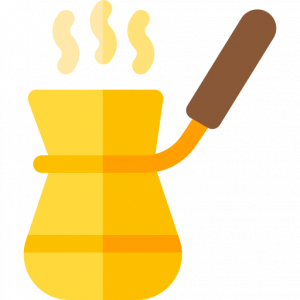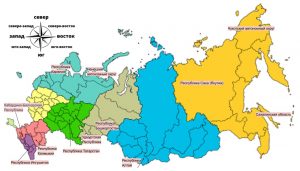1
Имена и национальности
Names and Nationalities
“Click on the exercise title to link to the teacher’s corner”
Упражнение 1:
 Часть 1: Узнаём об именах в разных регионах России (Калмыкия и Татарстан)
Часть 1: Узнаём об именах в разных регионах России (Калмыкия и Татарстан)
| Standards:
1) Comparisons: Cultural Comparisons 2) Connection (geography) 3) Communication: Interpersonal Speaking, Interpretive Reading |
Look at the map of the most popular names in different regions of Russia.
- Use this linked map to view which names are most popular in Russia.
- Look at the most popular masculine and feminine names in Republic of Kalmykia (Республика Калмыкия), Tatarstan (Татарстан), and the city of Khabarovsk (Хабаровск). You may also explore the most popular names in other regions and Russian cities.
- In small groups ask and answer the question using this model:
| – Кто живёт в Республике Калмыкия?
– Санан живёт в Республике Калмыкия? – Где живёт Самира? – Самира живёт в Татарстане. |
Check how well you know the names popular in Russia’s regions linked here.
 Часть 2: Узнаём об именах в разных регионах России (Калмыкия и Татарстан)
Часть 2: Узнаём об именах в разных регионах России (Калмыкия и Татарстан)
| Standards:
1) Communication (Interpersonal Speaking, Interpretive Reading) 2) Culture 3) Comparison 4) Connection (Geography) |
Look at the map of most popular names in different regions and cities of Russia linked here.
- Compare the names of the people who reside in Tatarstan and Republic of Kalmykia with the names of people who live in the central and eastern parts of Russia (Санкт-Петербург, Пенза, Курган, Хабаровск).
- Work in small groups. Ask your partner and respond to these questions:
- Где и какие имена популярны?
- Какие имена популярны в …?
- Respond using the following model:
| – В Пензе популярные мужские имена – Артём, Кирилл и Никита.
– В Татарстане популярные женские имена – Анастасия, Самира и Ралина. |
Упражнение 2:
 Часть 1: Узнаём об именах в разных городах России (Дагестан)
Часть 1: Узнаём об именах в разных городах России (Дагестан)
| Standards:
1) Communication (Interpersonal, Interpretive Listening and Reading) 2) Culture |
Watch the video about popular names in Makhachkala, Republic of Dagestan from 0:38-1:16, linked here.
- Answer the following questions:
- Какие самые популярные имена мальчиков в Махачкале?
- Какие самые популярные имена девочек?
- Какие редкие имена мальчиков?
- Какие редкие имена девочек?
- Check how well you can identify the most popular names for boys and girls in Dagestan by playing the linked game.
- Vocabulary: имя́, имена́, популя́рный, ре́дкий, коро́ткий, необы́чный
Упражнение 3:
 Часть 1: Узнаём об именах в Татарстане, Башкирии и Бурятии
Часть 1: Узнаём об именах в Татарстане, Башкирии и Бурятии
| Standards:
1) Communication (Interpretive Reading, Presentational Speaking) 2) Culture, Comparison 3) Connection (geography) |
Look at the linked article about popular names in the Republic of Tatarstan.
From this article, we have found out that names have several origins in Tatarstan: Turkish, Arabic, Persian, and European (тю́ркские, ара́бские, перси́дские и европе́йские имена́).
- At the bottom of the webpage, there is a list of names (both male and female). Work together with your group or partner and choose one of the name origins (происхождение имени: тюркское, персидское, арабское) in Tatarstan.
- Put a check mark next to this origin and click on the button “submit” (“применить”).
- You may choose male or female names or both (мужской, женский, любой).
- Look at the list, pick 5-7 names that you like the most, and fill out the graphic organizer linked here.
- Present your list to the rest of the class using the following model:
| – Самые популярные (мужские, женские) имена в Татарстане тюркского происхождения – Эльмира, Гульбара, Росана, Чулпан и Нурия. |
- Tell the group which name(s) you like:
| – Мне нравится женское имя Чулпан и мужское имя Ильназ. |
- Compare your list with the list of names compiled by other groups and identify the names that are popular in more than one region.
Часть 2: Презентация об именах в Татарстане, Башкирии и Бурятии
| Standards:
1) Communication (Interpretive Reading, Presentational Writing) 2) Culture, 3) Comparison 4) Connection (Geography) |
Choose one of the most popular names from Tatarstan, Bashkiria, or Buryatia following the links below:
Research the meaning of your name of choice and prepare a digital poster (on Canva or on another image-editing platform) or a slide presentation (Powerpoint, Google Slides) about the name.
- Include information about the republic, its location, languages, the name’s origin.
- Add information about famous people with the same name.
- Present this information in class.
- You may use the websites below to search information about the name in Russian:
Упражнение 4:
Часть 1: Популярные мужские и женские имена в городах России
| Standards:
1) Communication (Interpretive Reading, Interpersonal Speaking) 2) Culture 3) Connection (Geography) |
- Look at the maps of popular male and female names in different cities in Russia. Find the names that repeat.
- Look at the tables below to see which names have a Slavic origin and which ones have derived from Turkish, Arabic, Persian, and other languages.
- Choose one unique name (which appears only once on the map) and let other students guess which name you have chosen.
- You will be creating a dialog, using the following model:
| – Твой человек живёт в Волгограде?
– Нет, мой человек не живёт в Волгограде. – Твой человек живёт в Улан-Удэ? – Да, этот человек живёт в Улан-Удэ. – Его зовут Баир? – Нет! – Её зовут Эржена? – Да, её зовут Эржена. |
5. Check if you can identify which name is popular in which city below:
Мужские имена
| Slavic/European origin | Non-Slavic origin (Turkish, Arabic, Persian, etc.) |
| Василий, Иван, Антон, Илья, Виктор, Евгений, Виталий, Даниил, Пётр, Константин, Егор, Иннокентий | Мурат, Эрдни, Айрат, Гаджимурат, Хетаг, Ильдар, Адлан, Залим, Мурат, Баир |
Женские имена
| Slavic/European origin | Non-Slavic origin (Turkish, Arabic, Persian, etc.) |
| Любовь, Валерия, Виктория, Ирина, Галина, Дарья, Олеся, Диана, Екатерина, Лилия, Евгения, Ксения, Лариса | Байрта, Патимат, Алана, Залина, Лейсан, Айгуль, Малика, Фатима, Ньургуйаана, Эржена |
Культурные заметки
| Женские имена славянского происхождения обычно заканчиваются на гласную -а или -я (или мягкий знак -ь). Женские имена турецкого, арабского и персидского происхождения могут заканчиваться на согласную: Юлдуз, Сандугач, Ямал, Хаят (do not decline them). |
Упражнение 5:
Часть 1: Узнаём о народах России–цветах нации
| Standards:
1) Communication (Interpretive Reading, Interpersonal Speaking, Presentational Speaking) 2) Culture 3) Comparison 4) Connection (Geography) |
- 1) Look at the infographic of various ethnic groups in Russia, linked here. Find the following regions:
-
- Республика Алтай
- Ненецкий автономный округ
- Республика Калмыкия
- Чеченская Республика
- Чукотский автономный округ
- Республика Карелия
- Республика Саха (Якутия)
- Сахалинская область
- Республика Ингушетия
- Республика Татарстан
- Республика Башкортостан
- Удмуртская Республика
- Кабардино-Балкарская Республика
-
- 2) Work in small groups or in pairs and ask each other questions about the location of the specific Russia’s republic or region, and then respond following the model:
| – Где находится Республика Саха?
– Она находится на севере России. |

- 4) Then, scroll down to the list of all flowers (regions) and choose one from the list.
- Explore which ethnic groups reside there.
- Present the information about your region and the ethnic groups that reside there.
- You may also add the information about the location of your chosen region on the map of Russia: “Республика Дагестан находится на севере России. Там живут аварцы, даргинцы, кумыки и лезгины.”
Упражнение 6:
Часть 1: Узнаём о народах Республики Саха (Якутии)
| Standards:
1) Communication (Interpretive Reading, Interpersonal Speaking) 2) Culture 3) Connection (Geography) |
- Look at the infographic about the population of the Republic of Sakha (Yakutia), linked here.
- In a small group or with a partner, ask and answer questions regarding the people who live in Yakutia, using the model
| – Кто живёт в Республике Саха/Якутии?
– В Республике Саха/Якутии живут саха, русские, эвенки и украинцы. – Какой самый популярный народ в Якутии? – Саха – самый популярный народ там. – А какие народы не очень популярные в Республике Саха? – Узбеки и армяне не очень популярные народы там. |
- Then, look at the information about the languages, which are used in Yakutia. With your partner, ask and answer the question following this model:
| – На каком языке говорят в Якутии?
– Там говорят по-якутски (на языке саха). – А на каких ещё языках там говорят? – Там тоже говорят по-украински. |
Часть 2: Делаем устную презентацию о народах Республики Саха (Якутии)
| Standards:
1) Communication (Interpretive Reading, Presentational Speaking) 2) Culture 3) Comparison |
- Choose two ethnic groups from the linked infographic about the population of the Republic of Sakha (Yakutia).
- Research information about these groups and prepare an oral presentation (up to 1-2 minutes).
- Add information about the location of this region (the part of Russia), how many people live there and what languages they speak, what other ethnic groups reside there, how many people from your chosen ethnic groups live in Yakutia and what languages they speak, and any other interesting information about the two groups.
- Use the linked graphic organizer to collect and organize your information for your presentation.
- Make comparisons using the models:
| – В Якутии живёт 353649 русских, но только 5022 киргиза.
– В Якутии эвенки говорят по-эвенкийски и по-русски, а украинцы говорят по-украински и по-русски. |
- Find any additional unique or interesting information about the two ethnic groups and add it to your handout. Be ready to present your findings.
- Vocabulary: по-русски, по-якутски, на языке саха, по-украински, по-киргизски, по-эвенски, по-татарски, по-бурятски, по-армянски, по-эвенкийски, по-юкагирски
Resources:
- https://ysia.ru/saha-yakutiya-stat-v-respublike-prozhivayut-predstaviteli-bolee-120-natsionalnostej/
- https://республика-саха-якутия.рф/stati/narody-jakutii
- https://nazaccent.ru/nations/
- https://holden-k.livejournal.com/413489.html
https://shareslide.ru/pedagogika/prezentatsiya-k-klassnomu-chasu-moya-yakutiya
 Active Vocabulary
Active Vocabulary
| Русский-русская-русские | Башки́р-башки́рка-башки́ры | Чува́ш-чува́шка-чува́ши-чуваши́ |
Мужски́е имена́
Же́нские имена́
|
Мужски́е имена́
Же́нские имена́
|
Мужски́е имена́
Же́нские имена́
|
| Тата́рин-тата́рка-тата́ры | Чече́нец-чече́нка-чече́нцы | Мордви́н-мордо́вка-мордви́ны-мордо́вцы |
Мужски́е имена́
Же́нские имена́
|
Мужски́е имена́
Же́нские имена́
|
Мужски́е имена́
Же́нские имена́
|
| Украи́нец-украи́нка-украи́нцы | Армяни́н-армя́нка-армя́не | Алта́ец-алта́йка-Алта́йцы |
Мужски́е имена́
Же́нские имена́
|
Мужски́е имена́
Же́нские имена́
|
Мужски́е имена́
Же́нские имена́
|
“Click on the exercise title to link to the teacher’s corner”
Stickers made by Stickers from www.flaticon.com Icons made by Freepik from www.flaticon.com Icons made by Eucalyp from www.flaticon.com Icons made by juicy_fish from www.flaticon.com Icons made by Freepik from www.flaticon.com Icons made by Freepik from www.flaticon.com
